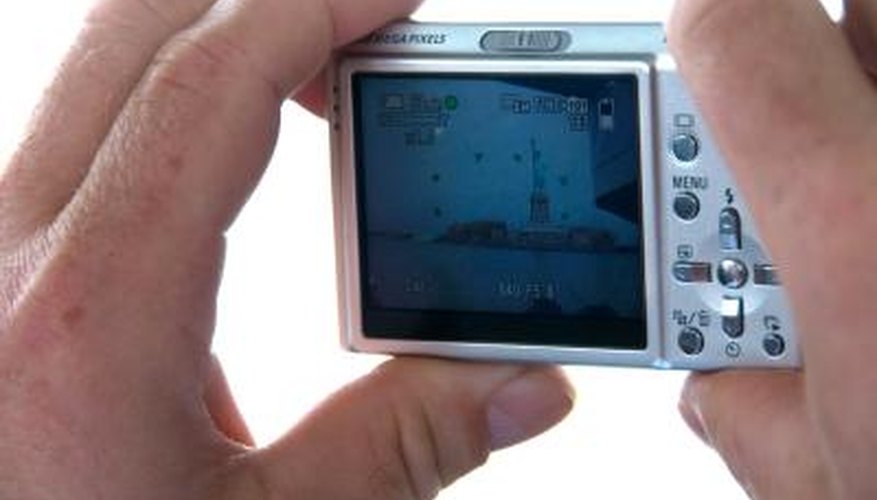Educators and students can use digital cameras in different settings and for contrasting purposes, including during field trips and in science and art projects. Teachers often have an easier time getting students interested in projects when they use digital cameras, but the electronic devices can be distracting and expensive to buy. Students often develop an understanding of how to use different features on digital cameras from using them in the classroom, but teachers have to have knowledge of the devices to be able to teach students how to use them.
Classroom Projects and Trips
Teachers can incorporate digital cameras into science, art, math, notice board, book, creative writing and English projects, having students put together books with pictures, take pictures of themselves for class notice boards, take pictures of specimens or samples, put together photos with writing projects or take pictures of different places they go on field trips. Students often enjoy projects when they are able to incorporate artistic elements, such as photographs, into them, and digital photos are easy to use because they don't have to be developed. On field trips, teachers and students can take pictures of different animals or plants they see and view them later. They could also post pictures on social media websites, such as Facebook, Twitter or My Space, for others to view.
- Teachers can incorporate digital cameras into science, art, math, notice board, book, creative writing and English projects, having students put together books with pictures, take pictures of themselves for class notice boards, take pictures of specimens or samples, put together photos with writing projects or take pictures of different places they go on field trips.
Learning Aspects
Using digital cameras in the classroom can help students to learn photography skills, which they can use at home or at their jobs. They may need to take pictures if they work as photographers or reporters. Working with digital cameras in the classroom often helps students to become familiar with the equipment, as well as terms such as pixels and white balance. Working with digital cameras also improves students' computer skills because they need to load pictures from the device onto computers and often edit the pictures using photo editing programs.
- Using digital cameras in the classroom can help students to learn photography skills, which they can use at home or at their jobs.
Distraction Problems
Using digital cameras for a project or field trip can take young people's attention away from other tasks, such as listening to their teachers or writing pieces to go along with their photographs. Teachers often have a hard time teaching students material when they are working with technology. Sometimes teachers need to have students put electronic devices away or shut them down to get them to listen. If teachers incorporate digital cameras into the classroom, they need to have designated times for students to use them.
- Using digital cameras for a project or field trip can take young people's attention away from other tasks, such as listening to their teachers or writing pieces to go along with their photographs.
- If teachers incorporate digital cameras into the classroom, they need to have designated times for students to use them.
Teacher Requirements
To teach students how to use digital cameras, teachers have to have basic or advanced knowledge of how to use the devices, depending upon how technical they get with their lessons. They have to know how to use different settings, use the optical and digital zoom features, adjust the lighting settings, upload photos onto a computer and focus a camera to be able to teach students how to use digital cameras. They may have to become familiar with different brands of cameras if they have young people bring in their own cameras to classrooms.
Costs
The price of digital cameras depends upon the number of megapixels, brand name, lens and zoom quality of cameras. Digital cameras often cost anywhere from £65 to £390, but extra lens, camera bags, memory cards and other equipment add to the costs, according to Costhelper. Schools often don't have funding for electronic devices such as cameras. If teachers want to use digital cameras in their classroom, they often have to buy the devices with their own money. Parents sometimes have to buy digital cameras for their children if teachers want their kids to have the devices for homework, which can be a problem for families that don't have extra money for electronic devices.
- The price of digital cameras depends upon the number of megapixels, brand name, lens and zoom quality of cameras.
- Digital cameras often cost anywhere from £65 to £390, but extra lens, camera bags, memory cards and other equipment add to the costs, according to Costhelper.
